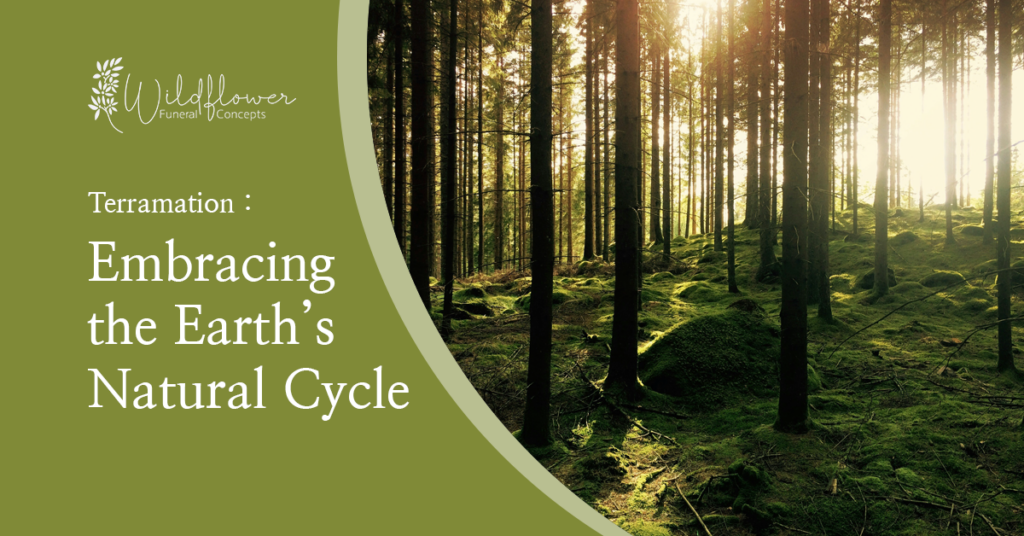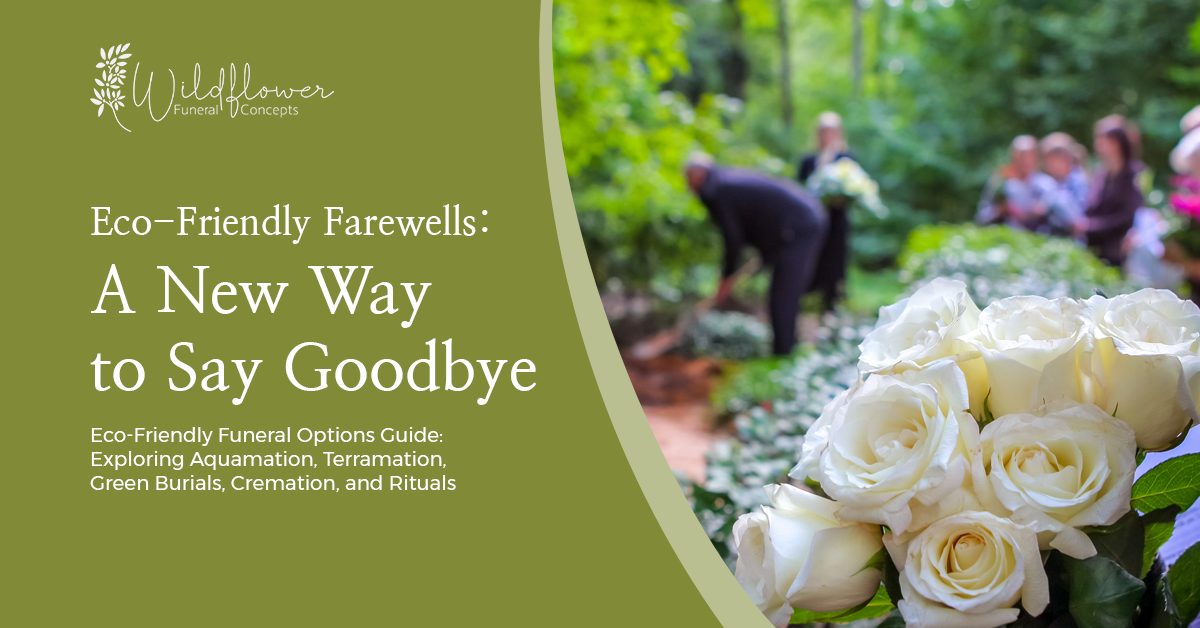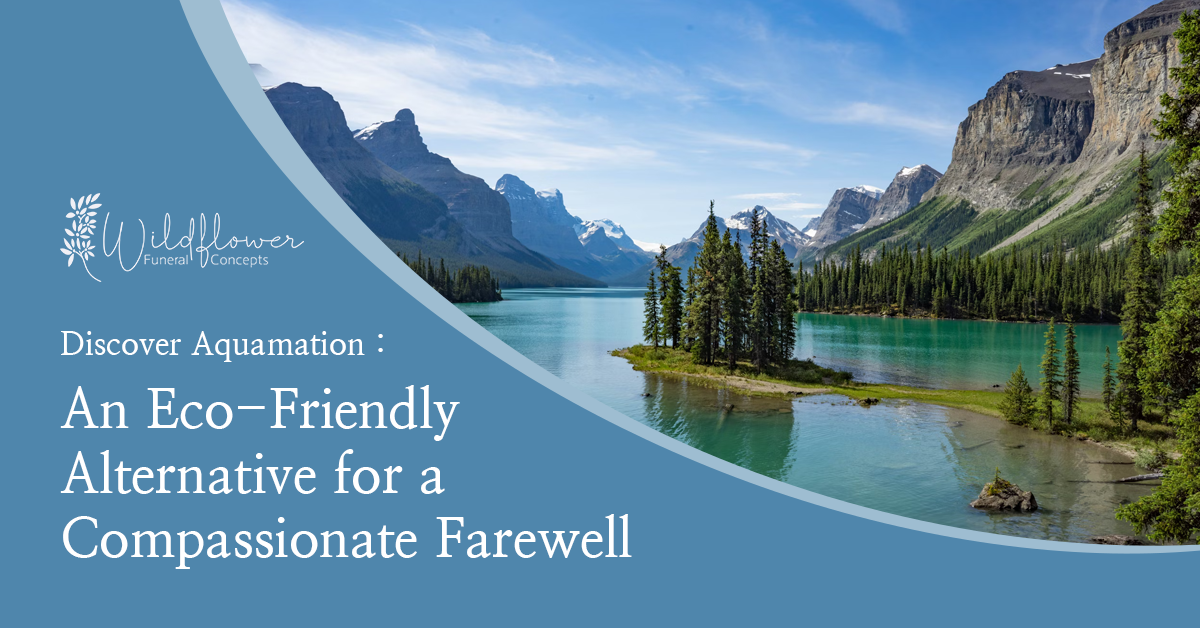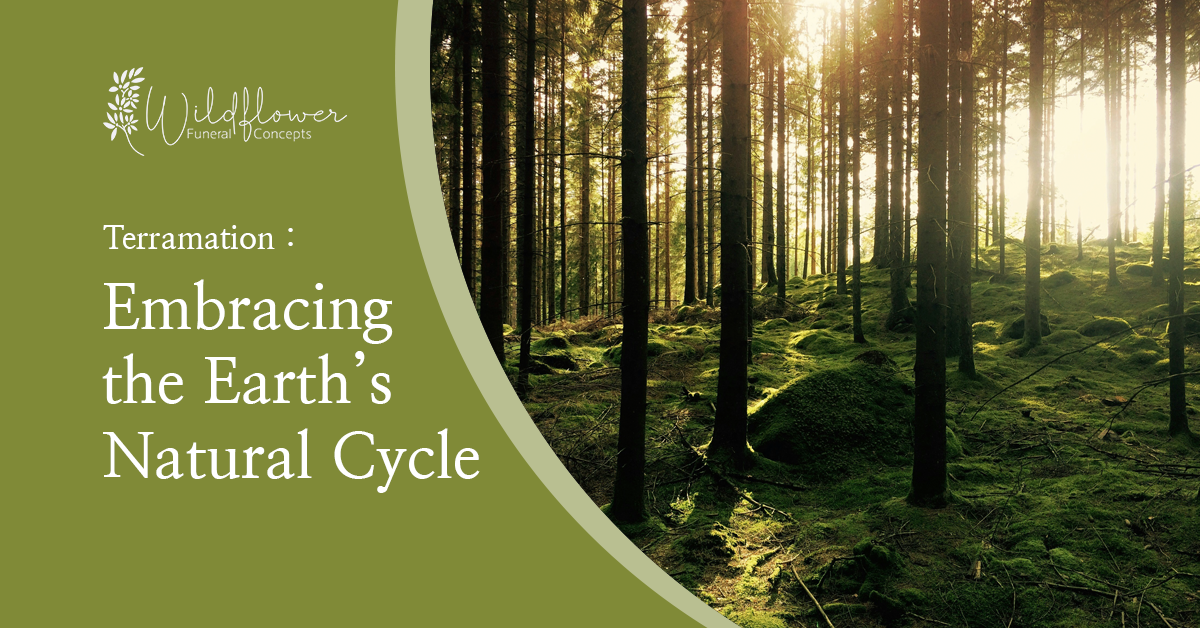As we walk the paths of life, we feel the earth beneath our feet, nurturing us, providing for us, and holding us in its embrace. When our time on this earth ends, we may desire a return to the soil in a way that honors this bond. Terramation (also known as human composting and technically referred to as natural organic reduction) offers a revolutionary and natural way to make this return, allowing the body to become part of the earth’s ongoing cycle of growth and renewal.
Terramation is an above-ground, indoor process that transforms the human body into rich, life-giving soil. This soil can be used to create a living legacy by nourishing plants, trees, and landscapes for generations to come. Terramation offers a way to honor life, death, and the planet in a single, compassionate choice. It is a process that speaks to sustainability, interconnectedness, and the belief that even in death, we can continue to give back to the earth that has nurtured us throughout our lives.
What is Terramation?
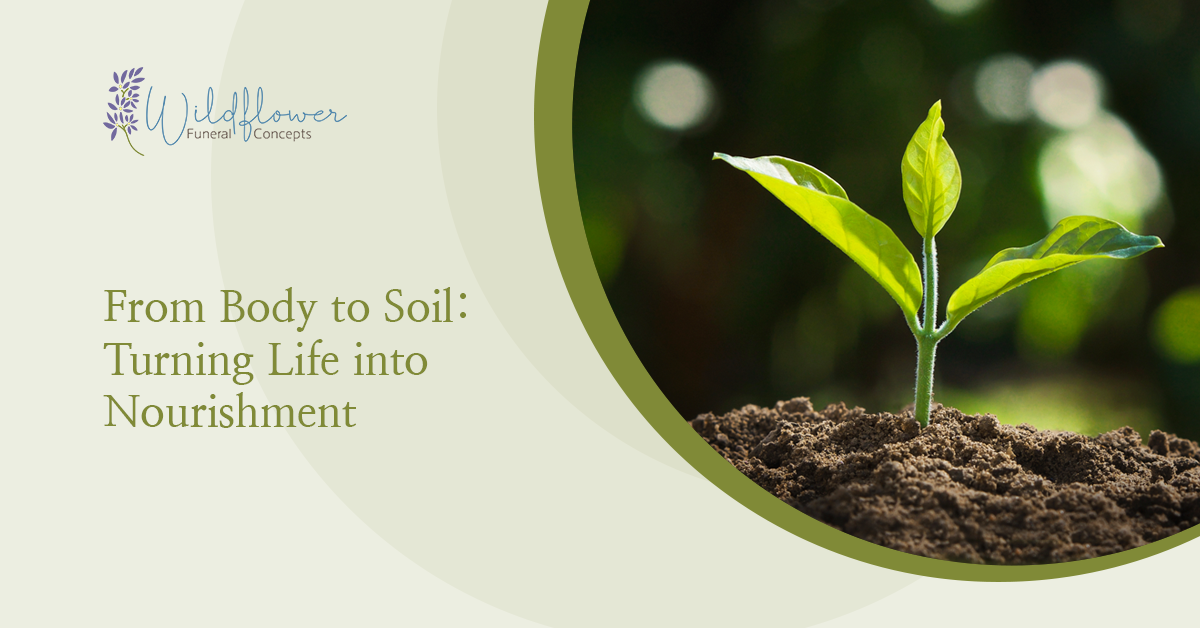
Terramation allows the body to decompose in a way that reflects the earth’s natural cycles. Just as leaves and organic matter break down and return nutrients to the soil, so can the human body. In terramation, the body is placed in a special vessel filled with organic material: straw, alfalfa, and saw dust. These materials work with the microbes that already exist in our bodies to help facilitate the natural decomposition process, turning the body into nutrient-rich soil over the course of about two months.
To begin the journey from body to soil, family and friends are encouraged to participate in a laying in ceremony. For this ceremony, the deceased is dressed in a compostable gown and placed in their vessel on a bed of the organic material. Family and friends gather to place more of the organic material and any special mementos into the vessel with their person. A laying in ceremony can be a beautifully crafted, and/or spontaneous ritual. Laying in ceremonies we have been a part of have included praying, singing, dancing, telling the deceased’s best (and worst) jokes, sharing favorite foods, and making toasts with a favorite beverage. The possibilities are only limited by imagination. If for any reason it is not feasible for family and friends to gather, our team is honored to see this through on a family’s behalf.
Once the deceased is laid in and their terramation vessel is sealed, the vessel is connected to an airflow system and a temperature monitor. A gentle whisper of air moves through the vessel to keep the microbes oxygenated so they can do the work of converting a body to soil. The temperature in the vessel reaches approximately 170 degrees Fahrenheit for several days. This heat is completely generated by the microbes doing their job and does not come from an outside source. The temperature is closely monitored and when it drops below 100 degrees the vessel is gently turned. Turning stimulates the microbes and causes the temperature to climb back up to around 170 degrees. This process of monitoring and turning is the first phase of terramation and takes approximately thirty to fifty days. Phase one is complete when the temperature inside the vessel will no longer climb above 100 degrees. At this point all soft tissue has been converted to soil.
For the second phase, all material is removed from the vessel. Any non-organic items, things like hip replacements, pins, dental metal and other prosthetic implants, are removed for recycling. Bone is processed down to pieces measuring about ¼ inch in size. Bone and soil are mixed together and placed into a secondary vessel to cool and cure for another 30 days. During this second phase all the processed bone is converted to soil as well.
At the end of phase two there is approximately a cubic yard of rich, life-giving soil weighing about 250 pounds. At this point, a lot of people ask, “Wait, my person only weighed 150 pounds. Where did the other 100 pounds come from?” Remember the organics (straw, alfalfa, and sawdust) that were incorporated into the vessel during the laying in ceremony? They are a part of the composition of the soil too.
After phase two is complete, terramated remains are returned in burlap bags that come in a variety of sizes. Burlap bags allow air flow through the newly created soil and are easy to handle and transport. Families may receive all the soil, or any amount of it that they would like. Any portion of soil that a family does not wish to receive can be donated to restore topsoil in an ecological restoration site.
This soil is safe, sterile, rich in nutrients, and can be used in a variety of ways. Some families choose to spread the soil in a meaningful place, such as a family garden, a forest, or a conservation area. Others may use it to plant trees or flowers, creating a living tribute that continues to grow and flourish. At one memorial service for someone who was terramated, the guests were gifted a little pot of soil allowing them to plant their own living tribute.
For many, the idea of their body returning to the earth in such a direct and natural way brings comfort and peace. It reminds us that life is cyclical and that even in death, we can play a role in nurturing the environment and contributing to the planet’s ongoing cycles of life and growth.
Ecological Benefits of Terramation
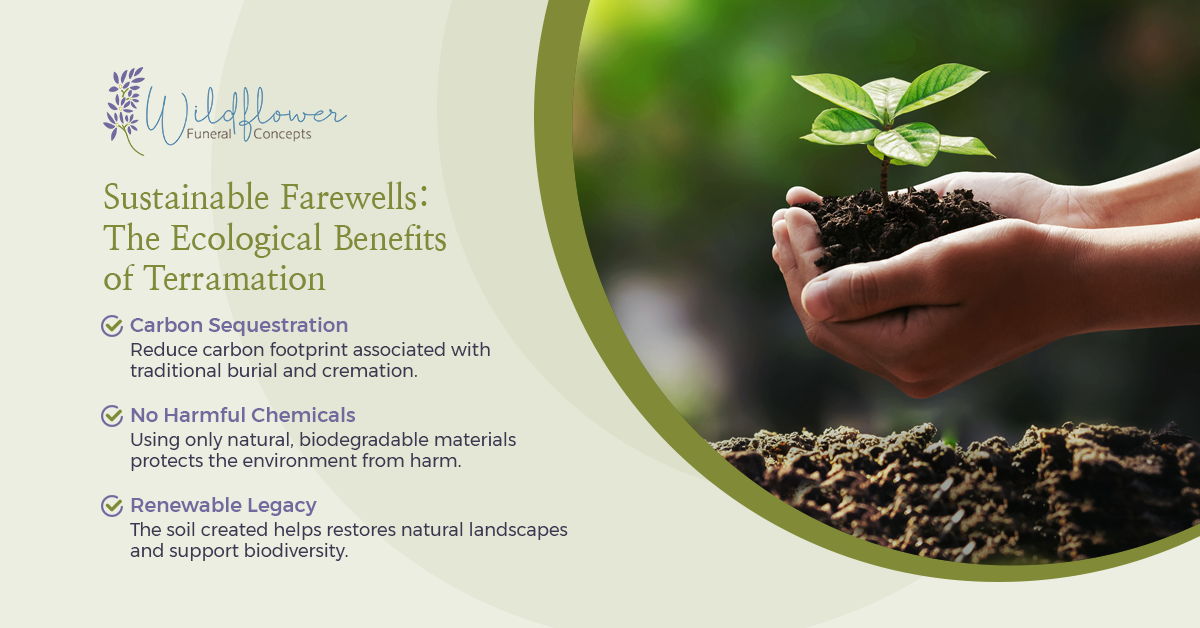
Terramation provides a way to minimize the impact of our final act on the planet while participating in nature’s cycles. In contrast, traditional burial and cremation both come with harmful environmental impacts. Traditional burial is resource intensive and often involves toxic embalming chemicals, concrete vaults, as well as a casket. Caskets are often made from slow growing hardwoods, chemically infused engineered wood products, or metals that are non-biodegradable. This is not to mention the chemical inputs and fossil fuels required to maintain acres and acres of monoculture lawns in cemeteries. All of this can lead to toxic chemicals and known carcinogens leaching into the surrounding soil and groundwater. Alternatively, cremation, releases approximately 560 pounds of carbon as well as other emissions (including mercury from dental fillings) into the atmosphere per cremation.
Some key ecological benefits of terramation include:
- Carbon Sequestration: By transforming the body into soil, terramation helps sequester carbon, reducing the carbon footprint associated with traditional burial and cremation.
- No Harmful Chemicals: Embalming is strictly prohibited in terramation which uses only natural, biodegradable materials, ensuring no harmful substances are released into the environment.
- Renewable Legacy: The soil created through terramation can be used to support reforestation, conservation, and regeneration efforts, helping to restore natural landscapes and support biodiversity.
For those who have spent their lives caring for the earth, terramation provides a final act of stewardship, ensuring that even in death, they continue to contribute to the planet’s well-being.
Terramation vs. Green Burial
Green burial is full body burial with no embalming. Green burial uses a 100% biodegradable container (like a woven wicker casket or cloth shroud), and does not involve the use of a concrete vault. It can also be used as a vehicle for ecological restoration and conservation. Not only does this minimize environmental harm, it also has potential for very real ecological benefits. There is no doubt that green burial is the most eco-friendly choice. However, green burial usually requires a rural setting to provide for the large amounts of land needed. It can also be rather expensive when considering the cemetery and funeral home costs involved. These factors can make green burial hard to access for a great many people.
Terramation on the other hand has the potential to be more accessible both geographically and economically. Terramation facilities are usually located in urban settings, which is where over half of the world’s population lives. Additionally, the cost for terramation can be less than half the cost of a green burial all while embracing many of the same principles as green burial.
Creating a Living Legacy
Like green burial, one of the most powerful aspects of terramation is its ability to create a living legacy. The soil produced is not just a byproduct, it is the intentional result of a process that mirrors natural cycles. It is a gift to the earth that can be used to support the growth of trees, plants, and flowers. For many families, planting a tree in memory of a loved one or using the soil to restore a natural landscape provides a sense of closure and continuity.
This living legacy can take many forms. Some families place soil in favorite places, such as gardens, at the base of a special tree, and conservation areas. Others may use it to support reforestation efforts, helping restore natural ecosystems and contribute to the planet’s health. In this way, terramation offers a way to ensure that a person’s cherished memory continues to grow and thrive, positively impacting the environment for generations to come.
A Deeply Personal and Meaningful Farewell
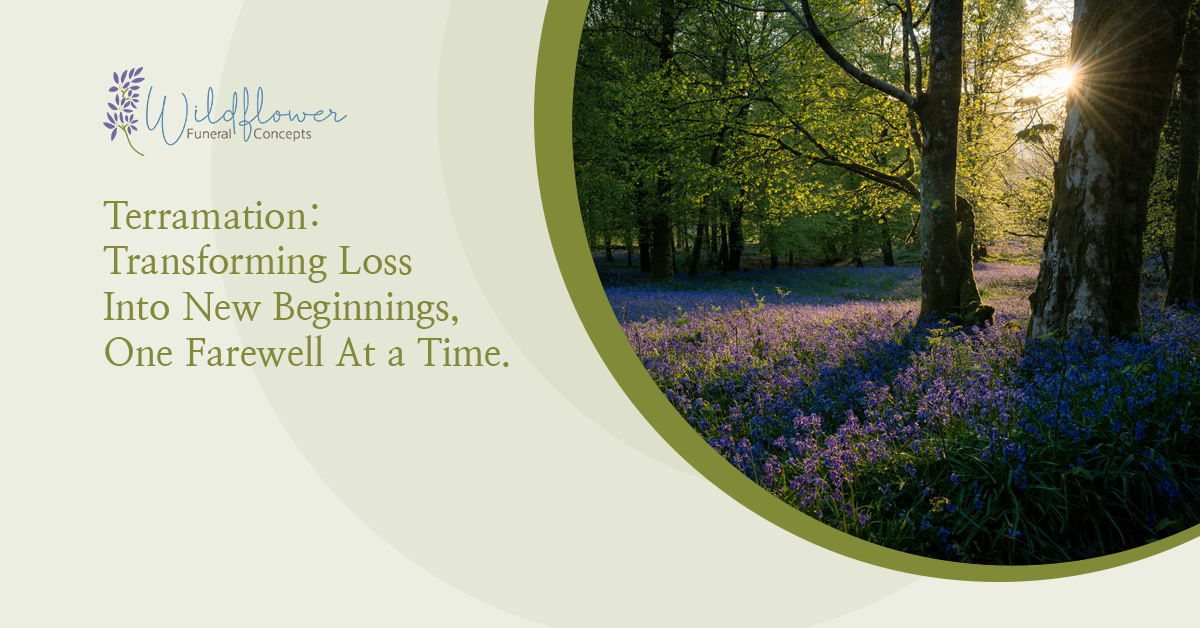
Terramation is more than just an environmentally friendly choice, it is also a deeply personal and meaningful way to say goodbye. From tender farewells at a laying ceremony to plants, trees, and flowers growing out of very special soil, terramation has the ability to nurture both the environment and grieving hearts while at the same time symbolizing the continuation of life and the interconnectedness of all living things.
Families who choose terramation often find comfort in the knowledge that their loved one’s body will continue to play a role in the earth’s cycles. The soil created through terramation becomes a tangible representation of life continuing in a new form.
For many, this idea of transformation, death leading to new life, is deeply resonant. It offers a way to reframe the experience of loss, seeing it not as an end but as a continuation. The soil produced through terramation is not just a byproduct of decomposition, it is a gift to the earth. A gift that supports growth, renewal, and the flourishing of new life.
Honoring Life’s Natural Cycles
At its core, terramation is about embracing the natural cycles of life and death. It acknowledges that we, like all living things, are part of the earth’s ecosystem and that our bodies can play a role in supporting the planet’s ongoing cycles of growth and renewal. By choosing terramation, families are honoring these natural cycles, allowing their loved ones to return to and nourish the earth in a way that is both respectful and regenerative.
For those who find meaning in the idea of life continuing after death, terramation provides a powerful way to make this connection tangible. It is a process that compliments grief with hope, loss with renewal, and death with life. By returning to the earth in the form of nutrient-rich soil, we become part of something larger, a cycle that has been turning for millennia and will continue to turn for millennia to come.
For more information about terramation and how it can provide a meaningful, eco-friendly farewell, visit Wildflower Funeral Concepts. We are here to help you create a legacy that honors life, death, and our shared world.


